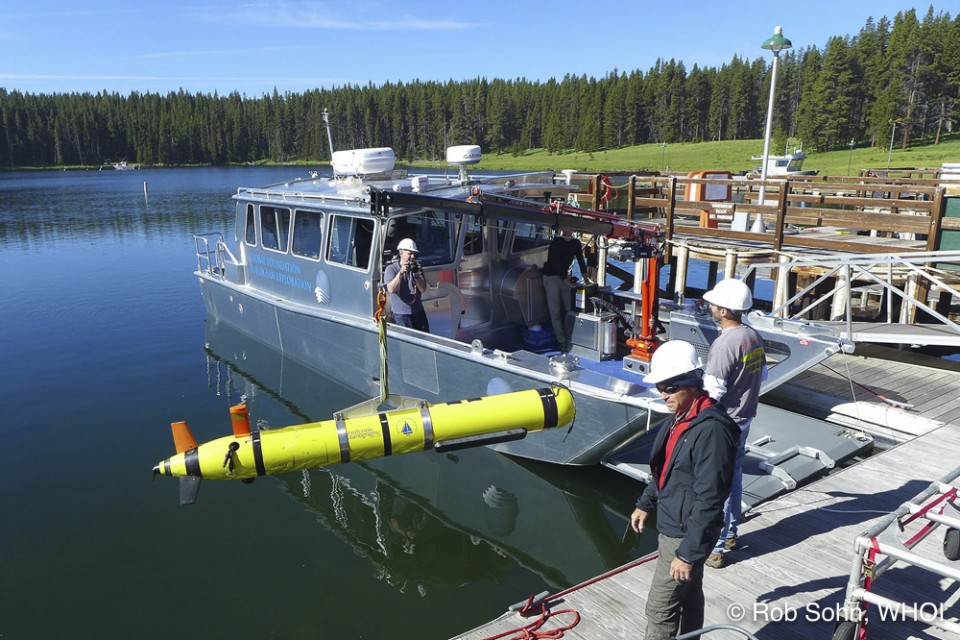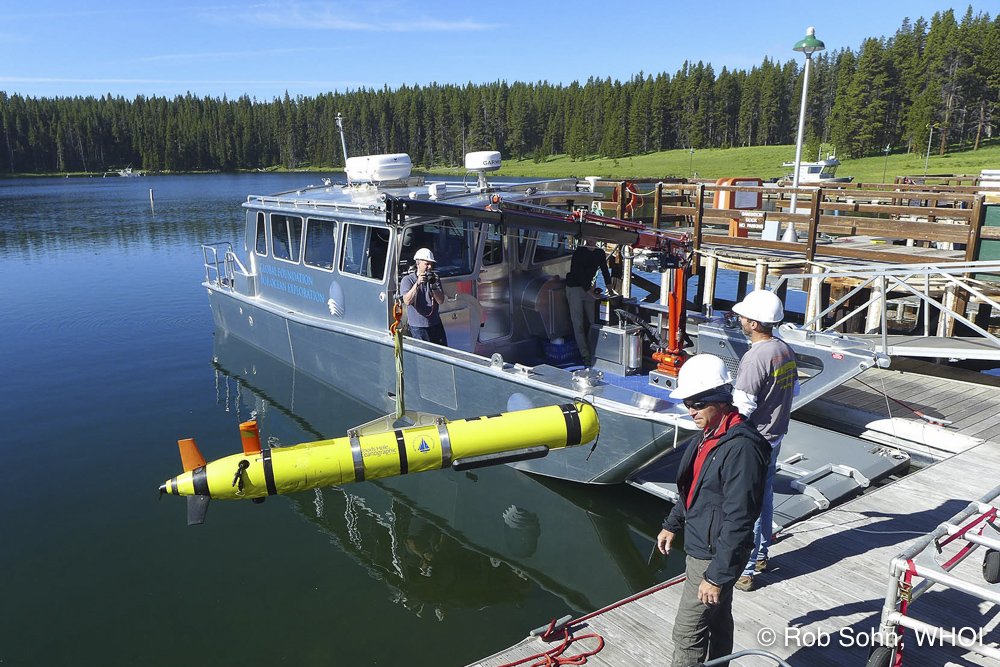After nearly seven years of planning, the HD-YLAKE field program has finally begun. The first step is getting all the gear to the Park and putting everything together. We couldn’t have done it without support from the Yellowstone National Park staff, who have been incredibly generous with their various resources.
This month, several of the HD-YLAKE science teams are beginning their research in the lake. One of those groups is the REMUS group. REMUS is an Autonomous Underwater Vehicle (AUV), i.e., an underwater robot with no leash. We are using REMUS to generate high-resolution maps of the lake floor and to find places where thermal fluids are discharging into the lake. The thermal fluids have lots of bubbles (CO2, SO2), and these are easy to detect with REMUS’ sonar system. Photos by Rob Sohn, WHOI. Work was completed under an authorized Yellowstone Research Permit.
The sun rises over Yellowstone Lake. Yellowstone Lake is the largest body of water in Yellowstone National Park, covering 136 square miles. Work was completed under an authorized Yellowstone Research Permit.
Our field program requires a lot of equipment, and some of it is pretty heavy. The Park Service has been incredibly helpful to us, especially in terms of logistical support, and here Mr. Whiteside of Maintenance uses a Bobcat to offload our gear. Watching, with healthier backs as a result, are (left to right, WHOI Joint Program student Paris Smalls and WHOI engineers Tim Kane and Greg Packard. Work was completed under an authorized Yellowstone Research Permit.
Once we got most of the gear out of the truck, we put the REMUS 600 AUV together in the truck bed. Eventually, this heavy and very expensive piece of equipment had to come out. Fortunately, there was a hoist nearby that is used to raise and lower a pump out of the sewage pipes and the Park Service kindly let us use it. Here Greg Packard works the hand crank while Paris Smalls carefully guides it out. Work was completed under an authorized Yellowstone Research Permit.
The AUV has a handy dandy cart to roll around on. Here the AUV team (Greg Kurras, Greg Packard, and Paris Smalls) roll the vehicle to the boat for a dunk test. Work was completed under an authorized Yellowstone Research Permit.
The AUV usually works in saltwater (i.e., the ocean) but this time it will be working in a freshwater lake. In order to adjust the ballast properly we need to perform a dunk test off the side of the ship. If the ship looks shiny and new that’s because it is. Dave Lovalvo (w/camera on ship) and his Global Foundation for Ocean Exploration built a brand new boat (Annie), custom made to do research on Yellowstone Lake and similar bodies of water. Greg Kurras and Greg Packard keep watch. Work was completed under an authorized Yellowstone Research Permit.
The engineers also test the vehicle sensor systems while its in the water for a dunk test. Since the vehicle has a lot of sensors, some of which are fairly complicated, it can take awhile. You might even say it can get a little boring if you’re in charge of holding the vehicle so it doesn’t float away. But then again at that moment it is YOUR JOB to lay in the sun next to Yellowstone Lake! Paris Smalls soaks it in. Work was completed under an authorized Yellowstone Research Permit.










